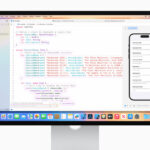Effortless PostgreSQL Backups with PG Rear Web
Information stored in databases plays a crucial role in the success of any project. PostgreSQL, a widely-used relational database management system, caters to developers of varying expertise levels, from novices handling small-scale projects to seasoned professionals managing intricate business frameworks. Hence, ensuring regular and reliable backups of PostgreSQL data isn’t merely suggested; it’s imperative.
Enter PG Rear Web, a fresh, complimentary, open-source endeavor coded in the Go programming language. This tool aims to streamline the process of backing up PostgreSQL databases, making it accessible not solely to IT specialists but to anyone tasked with overseeing database information.
Highlights of PG Rear Web
One of the defining features of PG Rear Web is its emphasis on simplifying the backup process, effectively saving time and doing away with the inconvenience of manual backups. Its user-friendly web interface allows users to effortlessly manage their backups without the need for in-depth database knowledge.
Key features of PG Rear Web are:
- Intuitive Interface: The sleek and user-friendly web design ensures a smooth start for newcomers.
- Automated Backups: Users can establish backup schedules once and forget about them, with PG Rear Web taking care of the rest in the background.
- Real-Time Observation: Detailed execution logs are provided, giving users insight into the status of their backups and ensuring seamless operation.
- Immediate Retrieval: In need of a quick backup? Users can download backups directly from the web interface without delays.
- Extensive Compatibility: Compatible with various PostgreSQL versions, from 13 to 16, to avoid software version discrepancies.
- Flexible Storage Options: Integration with multiple S3 storage choices offers scalability and adaptability for businesses of all sizes.
- Enhanced Data Security: PGP encryption safeguards every piece of data, ensuring privacy and integrity.
- Reliability of Open-Source: PG Rear Web provides transparency and dependability, built on the ethos of open-source with an MIT license and utilizing the trusted
pg_dumptool.
It’s essential to note one limitation of the tool: the current capability to transfer backups solely to S3 buckets. However, for users preferring local storage, a solution exists. Setting up a local MinIO instance seamlessly integrates with PG Rear Web for smooth operations, as demonstrated through rigorous testing.

For individuals unfamiliar with MinIO, it serves as an open-source, scalable, high-performance, secure object storage system compatible with Amazon S3 APIs. This versatility makes it ideal for constructing private (self-hosted) storage solutions, especially within cloud-native applications.
MinIO also functions as a temporary solution, with the core developer of PG Rear Web hinting at upcoming features that promise exciting enhancements.
“There is a feature pending implementation that allows local backups, so you can mount the docker volume wherever you want.”
In essence, the tool is on track to incorporate innovative capabilities in the near future.
Final Thoughts on PG Rear Web
To sum up, the efficiency and user-friendliness of PG Rear Web in managing PostgreSQL backups are commendable. The tool’s potential for growth positions it as a top choice for PostgreSQL users. Despite being a relatively recent project, our experience with PG Rear Web instils confidence in its prospective success.
For detailed information, head to the project’s GitHub page. Installing PG Rear Web using Docker Compose offers a straightforward method for interested users to give it a try.











